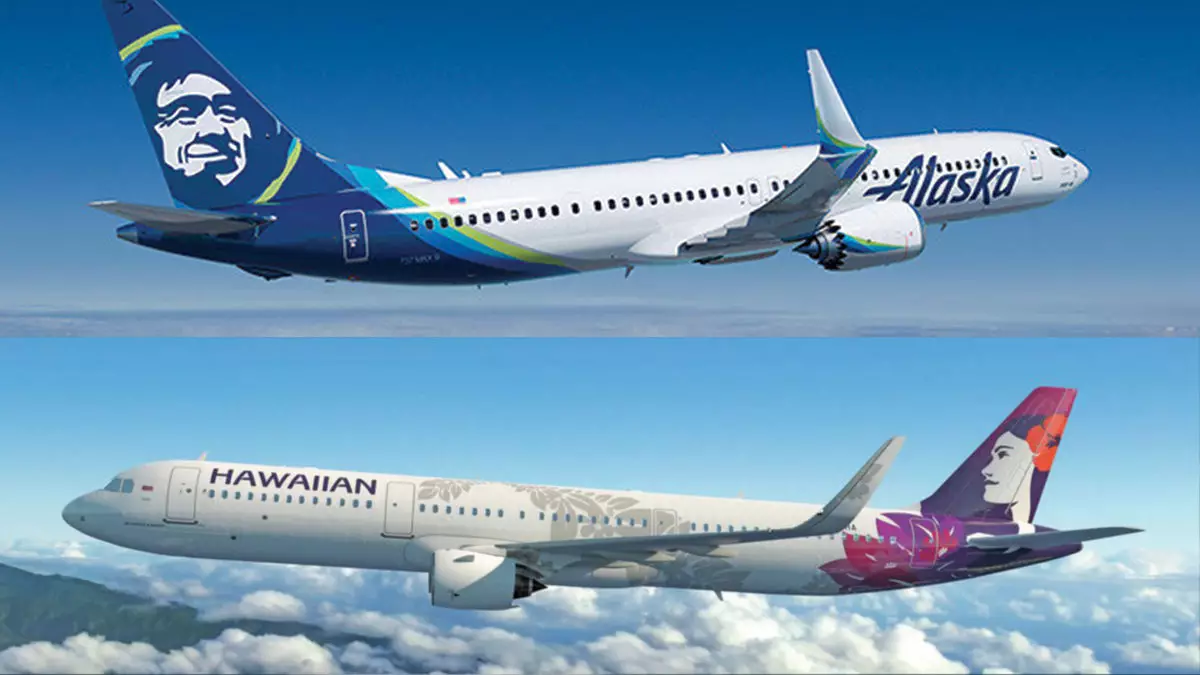In a significant move for the aviation industry, Alaska Airlines is poised to finalize its $1.9 billion acquisition of Hawaiian Airlines. This follows the U.S. Department of Transportation’s conditional approval, granted recently, clearing the way for operational integration. The deal had already progressed favorably through a previous hurdle, as the Justice Department chose not to contest the merger. However, the DOT’s approval comes with its own set of stipulations, introducing a layer of oversight as the two airlines gear up for a shared future.
Unlike the Justice Department’s approach, which merely sought to ensure market competitiveness without imposing additional conditions, the DOT has taken a more hands-on strategy by placing explicit requirements on both airlines. For the next six years following the merger, the newly united airline must uphold or even bolster flight services on routes where either Hawaiian or Alaska are significant players. This stipulation seeks to safeguard against service reduction, particularly on critical Hawaii interisland flights, which are vital for local connectivity.
To further regulate operations, the airlines must honor current interline agreements, which include partnerships with regional carriers like Mokulele Airlines. Such measures are especially important in maintaining service continuity and customer trust during the transition period.
Crucially, the DOT has mandated that Hawaiian Airlines adopt key customer service policies that have been integral to Alaska’s operations. One transformative requirement is ensuring adjacent seating for minors traveling with an adult—an essential improvement for families flying with Hawaiian. Furthermore, the DOT has stated that affected passengers will receive compensation in the form of travel credits or frequent flyer miles if they face flight delays extending three hours or more.
In acknowledgment of military personnel, the airlines must provide complimentary baggage options and waive change fees for active service members and their families. This commitment underscores a growing trend in the airline industry to cater to the unique needs of military customers, acknowledging their sacrifices and ensuring their travel experience is as smooth as possible.
Loyalty programs, a significant revenue driver for airlines, will also undergo strategic restructuring following the merger. Alaska Airlines is committed to maintaining the value of HawaiianMiles as they transition into a consolidated system with the Mileage Plan. Moreover, the airlines will implement a new joint rewards program featuring a 1-to-1 conversion of miles, ensuring that HawaiianMiles members retain the benefits they have accrued.
Importantly, the merger stipulates that existing HawaiianMiles will not expire during the initial six-year integration phase, granting peace of mind to loyal customers amid the transition. The amalgamation of loyalty programs also promises that elite status benefits will be preserved, an essential consideration for regular flyers who prioritize their status within the frequent flyer arena.
As the merger approaches completion, leadership roles have been defined to oversee this new chapter. Ben Minicucci will continue steering Alaska Airlines as CEO, while Joe Sprague will take the reins at Hawaiian Airlines. Sprague’s experience in the region is expected to be a vital asset during the initial phase, as both airlines will be operated separately but under common ownership before achieving full integration.
The combined entity aims to create enhanced competition within the market while improving consumer choice—an assertion made by Alaska Airlines in response to the DOT’s guidelines. However, the success of this merger will largely depend on effectively managing the structural changes, customer expectations, and operational challenges that accompany the integration of two distinct airline brands.
The pending merger of Alaska Airlines and Hawaiian Airlines represents a pivotal moment in the airline industry, promising both challenges and opportunities. The conditions set forth by the DOT ensure a structured approach to integration, while the commitment to customer service enhancements speaks volumes about the airlines’ priorities.
As these two airlines embark on their journey together, the industry will be watching closely to see how they navigate this complex merger, aiming to create a mutually beneficial experience for customers and stakeholders alike. The evolution of air travel continues, and with it, the potential for innovative strategies that can redefine customer loyalty and service excellence in the skies.


Napsat komentář